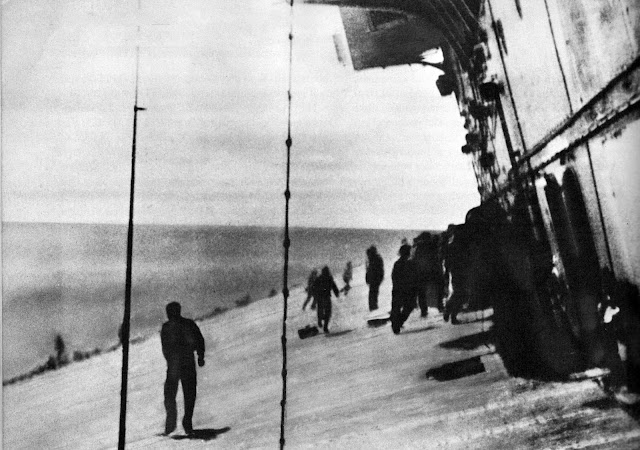Image size: 2680 x 1429 pixel. 988 KB
Date: Friday, 1 September 1944
Place: Beauvais, Oise, France
Photographer: Unknown
Panzerkampfwagen IV ausf B Tiger II Fahrgestellnummer (Hull Number) 280093, turmnummer (turret number) 104, of Schwere SS Panzer Abteilung (Heavy SS Tank Battalion) 101, after the crew abandoned the vehicle. Note that the hull mounted MG34 machine gun has been removed. After the destruction of the German military units in the Falaise Pocket, the surviving soldiers and their vehicles and horses made a dash for the Seine River in late August 1944. Several bridges were intact after repeated bombings, and the Allied divisions were severely depleted after two months of combat operations and unable to bring sufficient forces to prevent their escape. SS Abteilung 101 received fourteen Tiger IIs in late July and early August. As the Germans retreated into Germany, they engaged Allied forces in a defensive role, in which they excelled. On August 23, SS Abteilung 101 supported the 18th Luftwaffe (Air Force) Field Division in an attack on Guitracourt. Tiger II 104's commander, SS-Oberscharfuhrer Sepp Franzl (Squad Leader, or Warrant Officer) was the 1.Kompanie Headquarters Squad Leader. On August 29, Franzl's tank was hit by shellfire in the suspension near Magny-en-Vexin. Unaware of the damage, the crew engaged a British anti-tank gun in a barn at Aux Marais. When the Tiger II sharply turned to move away, the suspension failed, immobilizing the tank. Franzl and his crew bailed out. French Forces Françaises de l'Intérieur (Forces of the Interior), irregular bands of resistance fighters, observed the crew and fired when they bailed out. Sources vary on whether two crewmen were killed or made it back to German lines. A Sherman tank commanded by a Sergeant Roberts of A Squadron, 23rd Hussars, 11th Armoured Division, came across the tank and fired on it. German tanks would sometimes "play dead" to ambush Allied armor, so any German tank was fired upon. Roberts reported the engagement and was given credit for the kill. The abandoned tank was left in the field until December 1944. Frozen in place, gasoline fires were required to move it. The damaged suspension also proved problematic for the recovery crew. The tank was taken to the Bovington Proving Grounds in January 1945. Until 2006 the tank was on private display at the Royal Defense Academy in Shrivingham, Oxfordshire. Then it was returned to the Bovington Tank Museum for renovation and possible return to running condition.
Source :
https://www.themodellingnews.com/2018/07/tmn-on-tour-bovington-tank-museum-tiger.html
https://worldwar2database.com/gallery/wwii0150

_%E2%80%98104%E2%80%99_(35808215973)%20bovington%20king%20tiger%20koenigstiger%20konigstiger%20museum.jpg)



